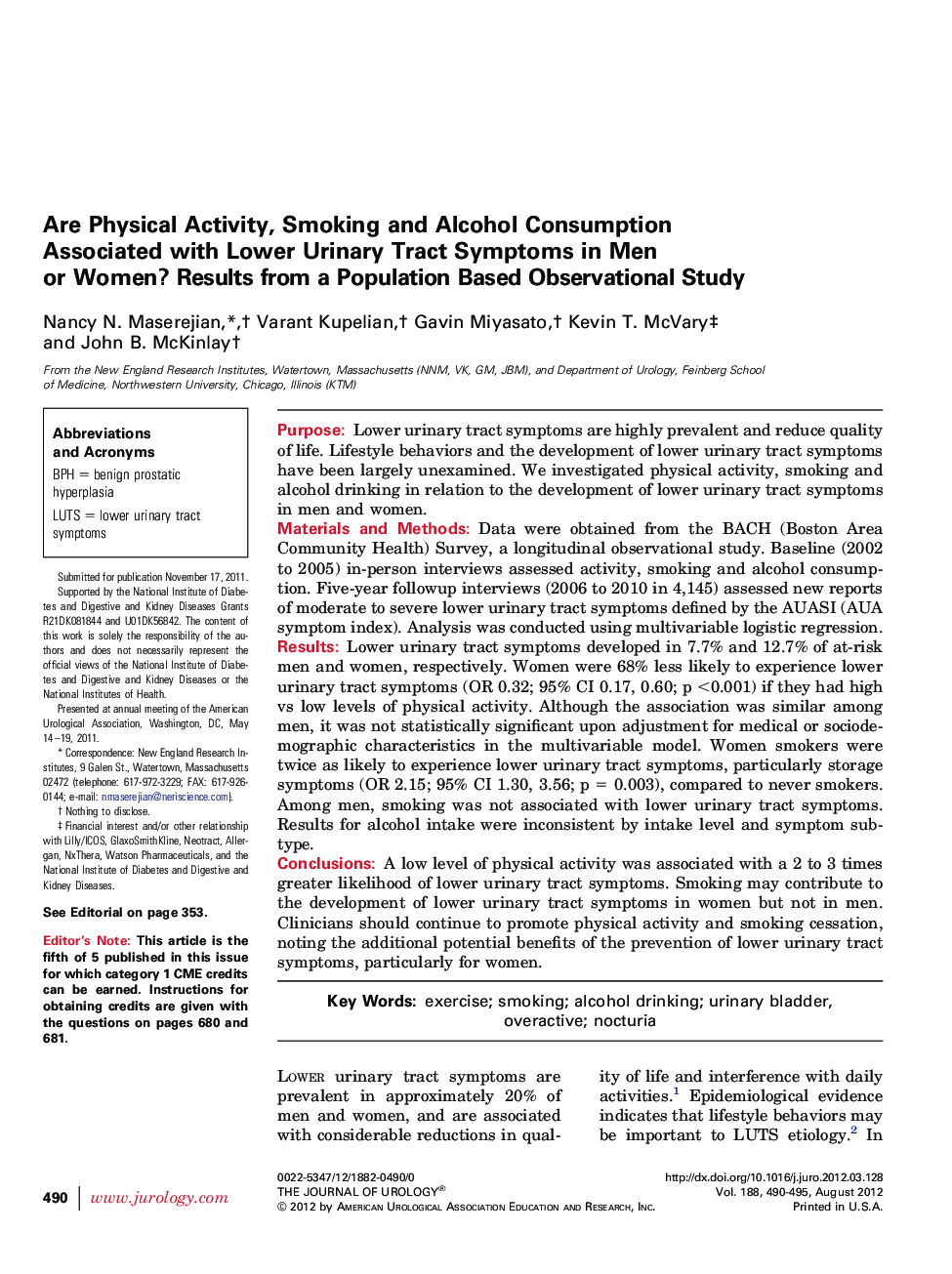| Article ID | Journal | Published Year | Pages | File Type |
|---|---|---|---|---|
| 3867107 | The Journal of Urology | 2012 | 6 Pages |
PurposeLower urinary tract symptoms are highly prevalent and reduce quality of life. Lifestyle behaviors and the development of lower urinary tract symptoms have been largely unexamined. We investigated physical activity, smoking and alcohol drinking in relation to the development of lower urinary tract symptoms in men and women.Materials and MethodsData were obtained from the BACH (Boston Area Community Health) Survey, a longitudinal observational study. Baseline (2002 to 2005) in-person interviews assessed activity, smoking and alcohol consumption. Five-year followup interviews (2006 to 2010 in 4,145) assessed new reports of moderate to severe lower urinary tract symptoms defined by the AUASI (AUA symptom index). Analysis was conducted using multivariable logistic regression.ResultsLower urinary tract symptoms developed in 7.7% and 12.7% of at-risk men and women, respectively. Women were 68% less likely to experience lower urinary tract symptoms (OR 0.32; 95% CI 0.17, 0.60; p <0.001) if they had high vs low levels of physical activity. Although the association was similar among men, it was not statistically significant upon adjustment for medical or sociodemographic characteristics in the multivariable model. Women smokers were twice as likely to experience lower urinary tract symptoms, particularly storage symptoms (OR 2.15; 95% CI 1.30, 3.56; p = 0.003), compared to never smokers. Among men, smoking was not associated with lower urinary tract symptoms. Results for alcohol intake were inconsistent by intake level and symptom subtype.ConclusionsA low level of physical activity was associated with a 2 to 3 times greater likelihood of lower urinary tract symptoms. Smoking may contribute to the development of lower urinary tract symptoms in women but not in men. Clinicians should continue to promote physical activity and smoking cessation, noting the additional potential benefits of the prevention of lower urinary tract symptoms, particularly for women.
